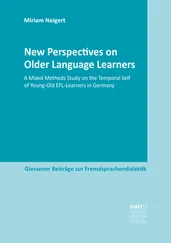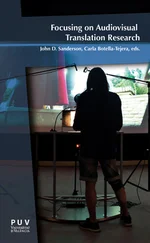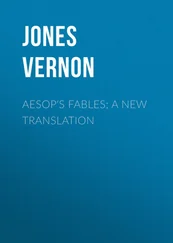Finally, portability refers to the degree of effectiveness and efficiency with which the platform can be transferred from one hardware, software or other operational or usage environment to another. This is the parameter in which cloud-based platforms excel, as they can be used in many different environments and operating systems (as long as Google Chrome is supported in this particular case). Cloud software does not need to be installed, or thereafter uninstalled, and can be easily replaced with other cloud- or desktop-based tools should they be needed.
Three key points make cloud-based systems like Ooona’s a promising environment to train future AVT professionals. Firstly, they are functionally suitable for subtitling professionals, in the sense that most phases of a given subtitling project are covered; secondly, they are fully compatible with other desktop-based software through a powerful conversion tool; and thirdly, they are both reliable from a technical point of view and portable from a mobility perspective.
As is the case with other software programs, OOONA Tools also presents several caveats that detract from its suitability to train of would-be subtitlers, such as the fact that tracked changes and comments cannot be exported, which makes the reviewing of subtitles a hard endeavour. Another shortcoming is the fact that subtitling projects, in the form of .json files, do not allow different users to work on the same file simultaneously; moreover, exchanging files necessarily implies leaving the cloud ecosystem and using an external file-sharing tool. And yet another drawback that compromised its cloud-based nature was the need to locally install a separate plugin, the so-called OOONA Agent, so that the user could work with some of the applications, which is no longer necessary in its latest 2021 update. In the past, this plugin was necessary to create soundwaves and shortcuts as well as to burn and encode videos. Ideally, all tasks ought to be carried out online and similar platforms should bear this in mind. Despite its limitations, however, OOONA Tools still constitutes one of the few cloud-based subtitling systems that are not proprietary and can therefore be used by subtitlers and trainers, all by offering a purely professional ecosystem.
Following this brief analysis, it would be useful to carry out further empirical research on other parameters, especially on usability. Observation and experimentation in the form of action research would be helpful to fine-tune the uses and applications of cloud-based platforms and inform teaching methods.
5
The uses of cloud technologies in AVT education
Despite its solid position today, AVT education still remains somewhat unexplored in academia when compared with other fields and specialisations. The first instructional courses, which can be traced back to the late 1980s in Europe, used to focus almost exclusively on the translation of cinema productions. At the turn of the century, AVT research and teaching boomed during the so-called golden years of AVT (Díaz-Cintas 2012: 280). This was a major turning point in the provision of AVT tuition in higher education as many universities around the world started to progressively incorporate AVT training as part of their existing programmes of study, both at undergraduate as well as postgraduate levels. In terms of academic visibility, one of the pioneering books on the learning and teaching of AVT was published by Díaz-Cintas (2008). Since then, a number of publications revolving around methods to teach AVT and accessibility have followed. That said, the literature often focuses on a specific AVT mode or a given country’s educational landscape. All this activity has, nonetheless, awakened much interest among the academic community and would-be translators, thus foregrounding the definitive establishment of AVT as a formal discipline and area of study in higher education (Gambier and Ramos-Pinto 2016).
Cloud-based systems, like the ones discussed previously, are transforming the ways in which translators work nowadays. It logically follows, then, that translators in training ought to familiarise themselves with these during their studies. On the one hand, a pedagogical approach that takes all cloud developments into account and exposes students to the latest advancements in cloud computing is paramount for students to gain the professional skills necessary to be more employable upon graduating. On the other hand, cloud-based platforms may also allow for a leaner transition towards distance education practices by encouraging a wider use of internet-based applications and tools.
The didactic potential of cloud-based solutions is considerable; they integrate all revoicing and subtitling tasks and allow the different agents involved to work on the same platform. As concerns revoicing solutions, these can be used in dubbing studios or could be accessed by voice talents from a place of their choosing, which would serve to enhance remote work and interconnectedness. Tools like the one shown in Figure 3 have the potential to be adapted to the classroom, so that students can simulate dialogue writing, translation and voicing tasks. They also afford the student a wider perspective on revoicing project management as well as industry workflows.

Figure 3 Audio recording interface of ZooDubs (work view).
Collaboration between software developers and trainers is relatively close today and the former are becoming more cognisant of the potential of cloud-based platforms in higher education and training centres. Some companies, such as Ooona 7 , have even created educational versions of their tools by tailoring them to the needs of both students and trainers (see Figure 4).

Figure 4 Ooona’s Online Toolkit for education (dashboard view).
As educators seek software that is better tailored to the learning and teaching of AVT, software developers need to be more creative to remain competitive and prominent in the market. It is expected that some cloud-based platforms will soon integrate features that are common in online learning tools such as Blackboard and Moodle. For existing platforms to be more pedagogically sound, they would ideally allow the trainer to create, share and assess teaching materials within the same interface, which may also include a video-conference plugin to deliver AVT lessons online.
The COVID-19 pandemic has been a rude awakening for higher education institutions in terms of the challenges posed by distance learning but, on the other hand, it has also been timely in creating awareness around the opportunities this type of education offers. Universities that used to offer commercial subtitling software on campus have no longer been able to use them in traditional classrooms or specialised computer clusters. Software providers and trainers have been placed in a difficult position when requested to make software available to students outside of campus. Many universities continue to encourage students and teachers to incorporate open-source software available on the internet into AVT curricula, whenever these are not already being used. Cloud-based solutions, however, are worthy of further exploration as they have a broader scope, offering an authentic working environment in which students can simulate most phases of an AVT project in an industry-informed fashion.
5
Conclusions
AVT is evermore present in the language industry nowadays. The localisation of audiovisual content has recently experienced a spike across the board, so the market continues to expand steadily and requires trained professionals, cutting-edge technologies and improved workflows. What was once a niche market has experienced technological advances in cloud computing in the last few decades, which have facilitated the industry’s growth, ultimately boosting productivity and stimulating the AVT sector’s wealth. LSPs/TSPs have created their own proprietary cloud-based software, while software developers have launched cloud systems in an attempt to cater for larger cohorts of practitioners.
Читать дальше



![Михаил Лермонтов - A Hero of Our Time [New Translation]](/books/27671/mihail-lermontov-a-hero-of-our-time-new-translati-thumb.webp)










